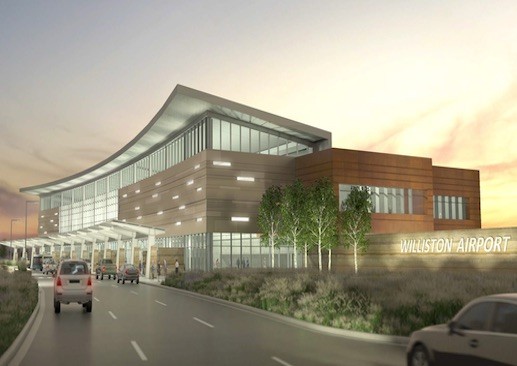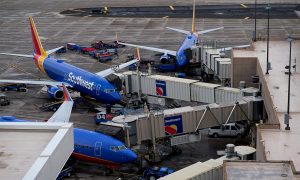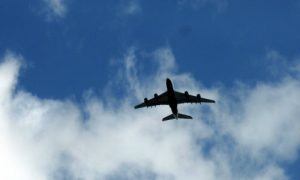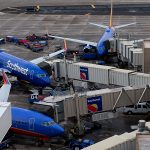The city of Williston, North Dakota, has been awarded a $27 million Airport Improvement Program (AIP) grant from the Federal Aviation Administration to buy 1,540 acres of land for a new airport. The city is building a new facility that will replace the existing Sloulin Field International Airport.
Why North Dakota, you might ask?
North Dakota is the second largest oil-producing state in the U.S. Williston is located in the middle of the Bakken formation, which holds massive reservoirs of oil in the shale, according to Williston Economic Development (WED).
And, air service is booming Companies coming to the region to drill for oil drove Sloulin Field’s passenger levels up from 10,894 in 2008 to a whopping 114,281 in 2014, with even more growth expected. The airport is currently served by Delta Air Lines and United Airlines.
An FAA-funded master-planning study found that Williston’s current airport is constrained by surrounding development and that it wasn’t economically feasible to rebuild it.
Instead, it recommended building a new airport in a different location that could accommodate current and future demand.
The new airport, which will cost around $254 million to build, will be called Williston Basin International with XWA as the three-letter airport identifier. Construction is expected to begin next fall, and the airport will be built in phases with an opening date in 2018.
Only three entirely new commercial airports have been built in the United States in the past 25 years:
- Denver International Airport, which cost $4.8 billlion, opened on February 28, 1995;
- Missouri’s privately held Branson Airport, which cost $155 million, opened on May 11, 2009;
- Northwest Florida Beaches International Airport in Panama City, which cost $318 million, opened May 10, 2010.
There is a pressing need for new and upgraded airports, according to Airports Council International-North America (ACI-NA), a trade group that represents airports.
ACI-NA estimates that U.S. airports have a collective funding need of $75.7 billion over the next five years, or $15.1 billion per year, to successfully complete these projects, according to its Airport Capital Development Needs: 2015-2019 report.
The vast majority of U.S. airports have used a mix of AIP grants and bonds, along with the traveler Passenger Facility Charge fee, to pay for new and upgraded terminals and infrastructure on existing land.
Some of those projects include new terminals at Wichita Dwight D. Eisenhower National Airport, Sacramento International, JFK and Dallas/Fort Worth International airports; new runways at Hartsfield-Jackson, Washington Dulles, Seattle-Tacoma and Fort-Lauderdale-Hollywood; and a hotel and public transit center at Denver International Airport.
Here are some story ideas:
- Go to your airport’s website and click on the business opportunities tab for projects up for bid.
- Also read the airport’s capital needs plan, which serves as a crystal ball for the facility.
- Speak with your local convention and visitors bureau to see how they work with airports on present and current transportation needs.
- Interview business and leisure travelers on current airport improvements and what they want to see in the future.
Editor’s Note: The article above cited three new commercial airports in the last 25 years, but there is a fourth: Utah’s St. George Regional Airport. This $159 million commercial airport, served by Delta Connection carrier SkyWest Airlines, opened on Jan 13, 2011. It replaced the old St. George Municipal Airport, located on top of a mesa, after the city determined that the old location had no room for expansion to handle traffic growth.











